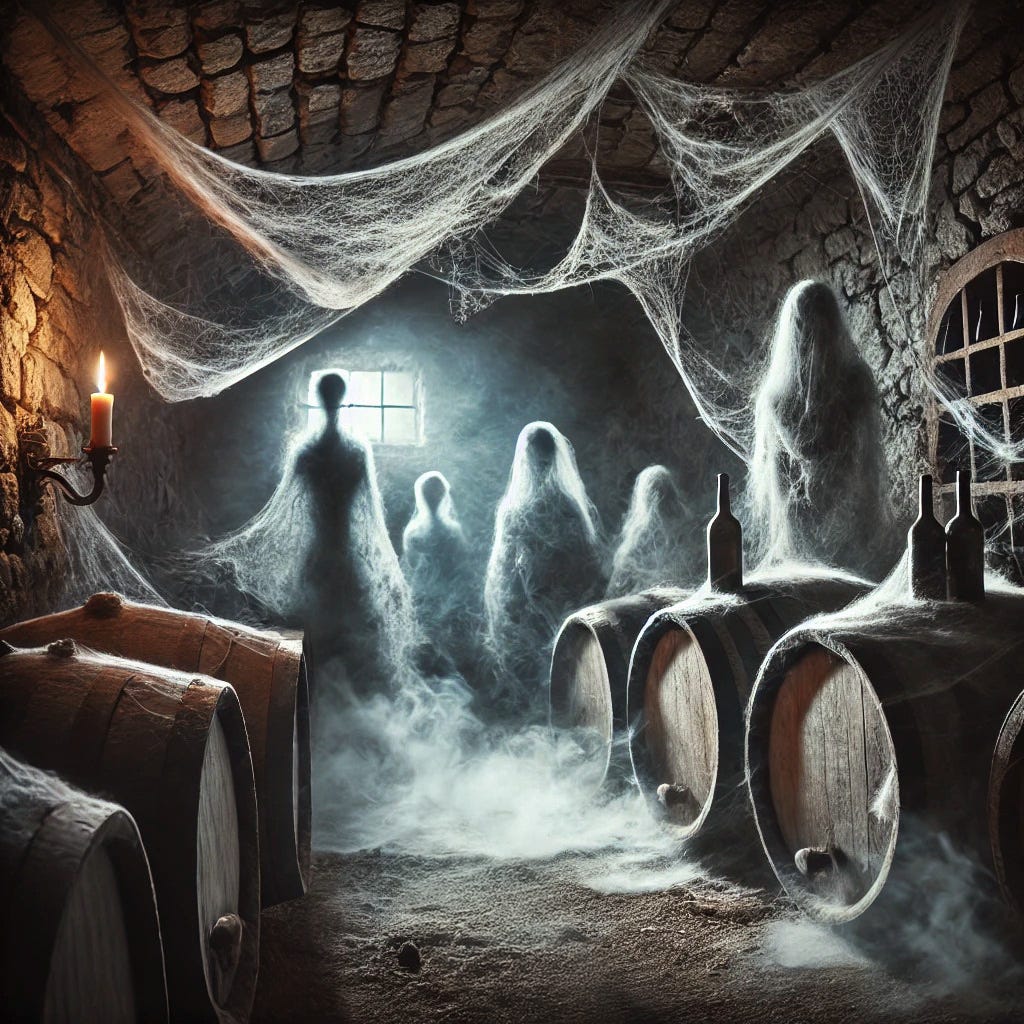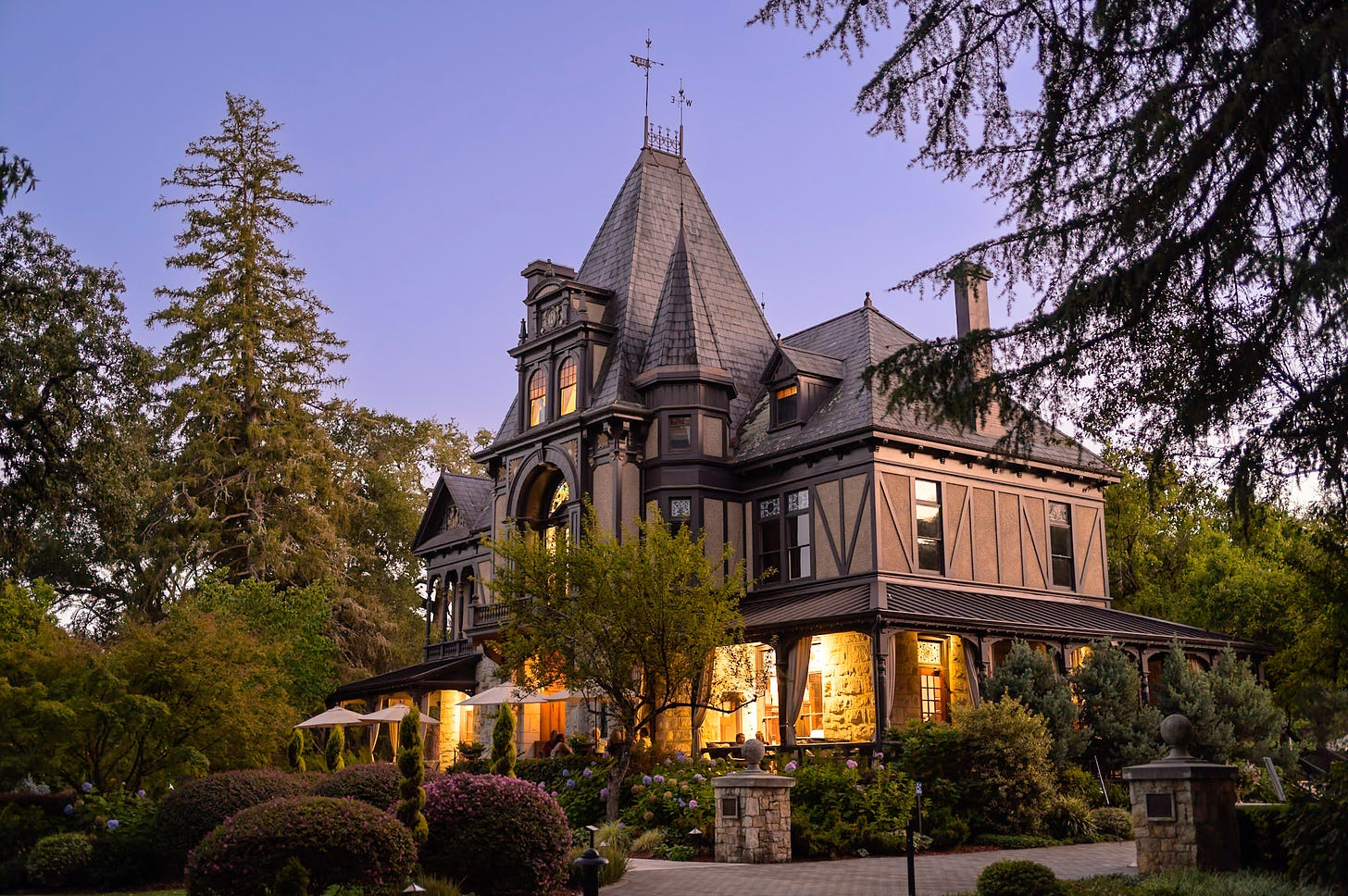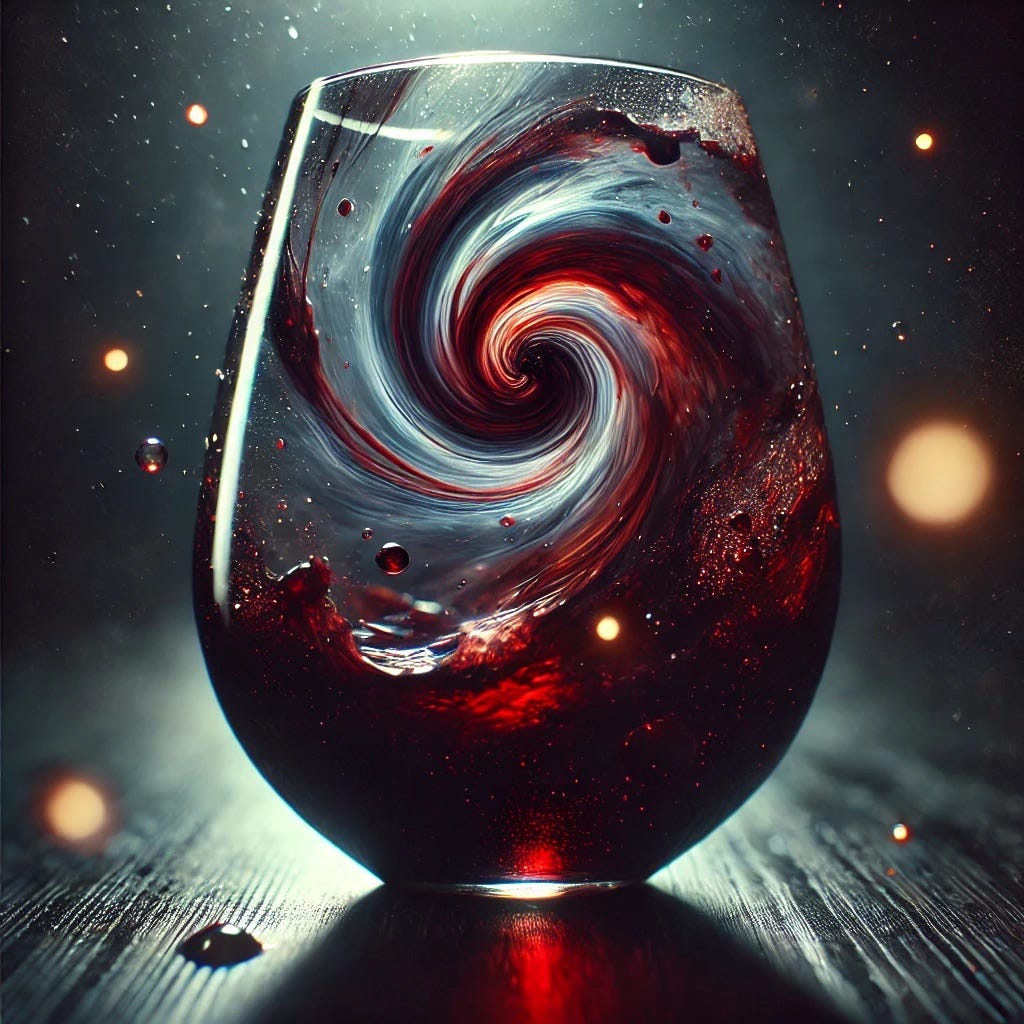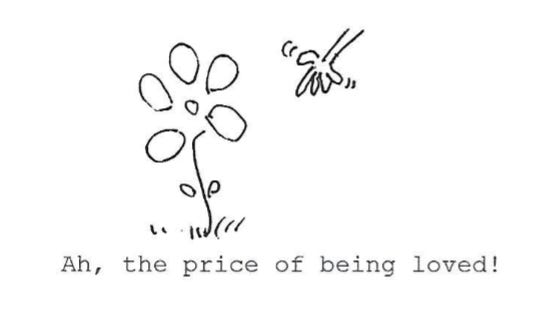NAPA VALLEY, Calif. — With Halloween fast approaching, the number of accounts about paranormal encounters in the Napa Valley is on the rise. These spectral experiences range from the frightful to the frankly amusing. Regardless of their nature, these Other Realm entities have left an indelible mark on the living.
The first story in this spectral sampler tells the account of the haunting of a Napa County bar by a once cold-hearted user of women. This decades-long paranormal encounter ended with the fairly recent closing of the establishment.
— Kharma and the Casanova: This account of paranormal activity is actually the sighting of a full, dense apparition seen within a one-time local watering hole. The dimly lit establishment had made it difficult for the handful of mortals who saw him to realize the “man” sitting at the end of the bar was of another world. For hours he would sit at the bar drinking his oddly colored libations as the smoke from his cigarette swirled around him in an almost entrancing motion.
Apparently the iconic and architecturally grand Beringer Bros. Winery and its Rhine House offer mortals more than one kind of spirit to sample.
Described as being of an average build, height and weight, he sported a well-groomed beard and styled hair. The neatly dressed ghost appeared to be in his 50s. However, the tattoos of demonic-looking serpents that almost seemed to glow on his forearms were unsettling to many of the living.
According to his human witnesses, he was quite jovial and talkative. They also said he had a very distinctive voice and laugh. But he never allowed anyone to get too close. If someone approached him, he would get up and move to another location.
According to these same mortals, around closing time his demeanor rapidly changed. He would become increasingly more agitated until he abruptly got up and walked out of the bar. When that happened, he became transparent.
According to an employee who had worked with the now-deceased bartender, in life this man had left behind a long string of broken hearts. But his cavalier ways eventually caught up with him when one of his victims sought revenge. The employee added, “You know what they say about a woman scorned!”
Apparently, decades ago, that scorned woman waited for the man to leave the bar just before closing, as he always did. Hidden under the cover of darkness, she shot him and left him to die lying on the ground in a pool of his own blood. Before he died, the bar owner and the old bartender found him. They desperately tried to get him into one of their cars to take him to an area hospital, but he perished before they could do so.
The next stop on this tour of Napa Valley’s paranormal sites is a beautiful historic estate in St. Helena. Numerous accounts of encounters with a former owner as well as other entities have been reported at this location.
— Beringer Winery’s Other Spirits: October is a spirited month in Napa Valley and Napa County as winemaking and ghost stories abound. One Napa Valley winery well-known for both is Beringer Bros. Winery with its iconic Rhine House, fine wines and, it is said, extraordinary paranormal activity.
Beringer Bros., located near the northern edge of St. Helena, was founded in 1876 by its namesakes, Jacob and Frederick Beringer. Jacob was the visionary who made the wines and managed the winery. He also supervised the construction of the winery buildings and wine-aging caves. The cornerstone for the first winery building was laid in March 1877. A year later, in 1878, Chinese laborers began excavating the wine-aging caves.
The first Beringer Winery ghost story involves those very caves and laborers. Kathleen Kernberger, a local historian and author who is now deceased, recounted the story told to her by her aunt, Virginia Hanrahan, also a noted local historian. She spoke of how on windy nights distressing cries and moans would come from deep within the caves. According to Hanrahan, those sorrowful sounds were the wails of the ghosts of the Chinese laborers who had been entombed deep within the caves because the Beringers were unable to pay them. However, that part of the story was dispelled when a review of the winery’s payroll ledgers clearly showed the laborers had been paid.
Kernberger also said that eerie sounds were created as strong winds forced air through fissures in the rocks. Following the application of a spray-on cement compound throughout the caves, those openings were sealed off, and that silenced the chilling wails and moans. However, even after the caves had been coated with that compound, people continue to report feeling exceptionally cold spots in the caves and hearing faint whispers of the long-since-gone Chinese laborers. Also, photographs of the caves frequently capture images of odd orbs of light.
As for the residences on the estate, Jacob and his family lived in the farmhouse originally built around 1860 by David Hudson, an early Napa County pioneer settler. However, this dwelling was originally located about where the Rhine House stands today. The Hudson House was moved to its present location by placing logs under the house and rolling it into its current position.
As for reports of paranormal activity within the Hudson House, they are infrequent and minor. Those who have experienced the unexplainable in this building have spoken of objects being moved, hearing footfalls either ascending or descending the stairs, or being brushed by a cool but definite energy. While this is unsettling, most of the witnesses have learned to live with these mild paranormal encounters. But the same cannot be said for the Rhine House.
The elaborate residence was the second home for Frederick, the financier and promoter of the winery. He and his family were accustomed to living in grand style. In 1883 he commissioned San Francisco architect A. Schropfer to design his country wine estate home, which was to be built on the visually prominent site formerly occupied by the Hudson House. Frederick was very specific about its design. The future three-story house was to be a replica of the brothers’ ancestral home located in the Mainz, Germany, area.
It is said that another distinctive characteristic of this grand former residence is its considerable amount of paranormal activity. In fact, the winery has an overflowing file documenting numerous encounters.
For example, one evening, just after closing, two employees were cleaning up the downstairs of the Rhine House when all of a sudden a loud crash came from the upstairs founders’ tasting room. That room had been Frederick’s bedroom and the place where he died in 1901. The two employees each took a different staircase upstairs, neither one passing any mortal on their way. When they entered the room, they found that a heavy silver tray had been thrown across the room, and broken stemware was strewn everywhere. Many attribute this occurrence to Frederick and his apparent disapproval of his private quarters being used as a public space.
Other employees have heard footfalls ascending the stairs when no other mortal was present. Other even more unnerving encounters that profoundly frightened workers have happened within the Rhine House. After hours, the night crew thoroughly cleans the house, and on numerous occasions those workers have been startled or worse by the sight of Frederick walking through the walls. In fact, one worker was so frightened by the sight he ran out of the house and never returned, even to pick up his paycheck.
Apparently the iconic and architecturally grand Beringer Bros. Winery and its Rhine House offer mortals more than one kind of spirit to sample.
The setting for the final account of this trilogy of ghostly tales is Calistoga. It, too, is a bit of Other Realm karma, but it is far more lighthearted and amusing.
— A Boy Named Jack: Paranormal chaos can occur even within an unassuming and neatly kept house, in this came the home of a confirmed bachelor who is extremely uncomfortable around children. According to this man, the entity “living” at his home is a full apparition of a 4- to 5-year-old boy. However, his facial features are not visible.
“As long as you give him the attention he craves, he’s happy and behaves,” the man said. “But, if you don’t, watch out! He has quite the tantrum and turns almost everything in the house upside-down, literally. The boy, whom I have named Jack, also likes to play pranks on us pathetic mortals. He loves to go invisible and then taps you on the head or shoulders. It can be quite unnerving!”
Also, according to the bachelor, his mortal family, while a bit unnerved by their adopted ghostly family member, find this whole situation a bit of karma for the bachelor. He was said to be difficult, unruly and quite a prankster when he was a child.
“I think they encourage Jack to act up as they find my being a ‘father’ to my ghostly boy payback for my childhood misbehavior and antics,” he said. “I’ve altered a popular saying to describe my weird life and crazy circumstances. ‘Happy ghost, happy life!’ That is the moral of my story. But I do caution people to keep their ghostly ones in good spirits — a bad but intended pun. Happy Halloween!”
Enjoy the spirits of this season, if you dare!
If today’s story captured your interest, explore these related articles:
Sunday E-dition: Calistoga and Its Library – a Century Long Retrospective
The Historical (And Personal) Significance of Mexican Independence Day
Sunday E-dition: Frank Trozzo’s “IMAGINE THAT!” Art Show is a Fantastical Experience
Ray Ray’s Tacos Adds Spice to St. Helena’s Expanding Food Scene
Sunday E-dition: Mental Health Tips for Caregivers and Students
Sunday E-dition: End-of-Life Planning for Peace in Challenging Times
Sunday E-dition: Retired Judge Brings Real Napa Valley Crimes to Life
Sunday E-dition: WineaPAWlooza Raises $1.1 Million for Animals
Rebecca Yerger is a local historian, historic preservation consultant, writer and Napa Valley native.
Levity Corner
Caption contest: Pick your favorite caption or add your own in the comments below.
Possible captions:
"You do realize 'last call' means something very different to him."
"And that’s why we don’t talk politics at the bar!"
"He said he’s here for the spirit specials."
"No bones about it, this guy is the life of the party!"
"Skeleton crew drinks for free!"
Last week’s contest results
In “Sunday E-dition: Locals’ Role in the 1846 Bear Flag Revolt,” the winning caption was "Once, we didn’t need flags to call it home,” with 50% of the votes.
Once, we didn’t need flags to call it home."
"And back then, no one had even invented fences yet!"
"Once upon a time, there were no lines to cross."
"And that, my cubs, is why we never trust beavers with directions."
"The moral? Never argue with a raccoon."
Last Week
Mariam Hansen and Shannon Murray Kuleto explored the Napa Valley settlers’ involvement in the 1846 Bear Flag Revolt in their article "Locals’ Role in the 1846 Bear Flag Revolt." The rebellion saw American settlers, many from Napa Valley, seize Sonoma and briefly establish the California Republic. They arrested Mexican authorities, including Mariano Vallejo, and raised a homemade flag featuring a bear, which later became the state symbol. The revolt ended after the U.S. Navy's arrival, signaling the Mexican-American War. The authors also highlighted key Napa Valley sites connected to these events.
In “Weekender Encore: Celebratory Atmosphere Welcomes Costco to Napa Valley,” Lisa Adams Walter recounted the community excitement surrounding the long-awaited Napa Costco opening. After a decade of anticipation, residents lined up for the Oct. 18 debut, with some camping out for days to be first in the door. The new store, located in the RiverSound development, offers extensive wine selections, luxury items and local goods while providing 300 jobs and a nearby shopping option for Napans. Costco’s general manager Tim Stone and Napa Mayor Scott Sedgley emphasized Costco’s community impact, from reducing travel for locals to contributing sales-tax revenue for the city.
Tim Carl examined the Napa Valley wine industry's decline in "Collapse or Correction? Demographics and Labor at Play," linking its challenges to shifting demographics rather than marketing or pricing issues. Carl noted that the industry's boom was driven by baby boomers' interest in luxury goods, which has sharply declined as this generation ages out of peak consumption years. Generation X, which lacks the numbers to compensate, and millennials, who face financial constraints and different spending preferences, fail to sustain prior demand levels. Carl added that Napa Valley’s aging workforce compounds local economic pressure, with shrinking labor supply and rising health and service demands as the population skews older.
Monique Byro highlighted Napa’s coordinated sustainability efforts in “Napa’s Path to Sustainability: Weaving Local Plans Into One Resilient Future,” outlining several initiatives aimed at boosting community resilience against climate and environmental challenges. Central to this approach is the Regional Climate Action and Adaptation Plan, which targets greenhouse gas reduction and climate preparedness through local engagement. Napa’s Community Wildfire Protection Plan focuses on wildfire resilience while the Urban Forestry Management Plan enhances urban tree canopies for cooling and habitat support. Napa Resource Conservation District also plays a key role in conservation. Each plan emphasizes community involvement, teamwork and partnerships as essential to Napa’s sustainable future.
Charlotte Hajer explored global variations in mental health in her article, "Global Mental Health Matters," Hajer highlighted how cultural factors influence the diagnosis and treatment of mental illness, with examples such as Moroccan psychiatrists diagnosing hysteria and India's differing perceptions of hearing voices compared to the United States. She emphasized the universality of psychological suffering while noting how local environments shape individual experiences and the success of treatments. The piece called for greater diversity in mental-health services to meet the needs of varied communities.
Bob Niklewicz reflected on his frugality in “I’m Not Cheap, I’m Frugal,” recounting his tendency to repurpose rather than waste. From a family of immigrants who valued making do, Niklewicz shared how he repurposed parts of old binders to support his garden, fashioning binder rings into plant stakes for his drooping dahlias. Though he could have solved the problem with conventional materials, he took satisfaction in his inventive solution, blending nostalgia and creativity in his approach.
Next Week
We’ll have more interesting articles from a host of Napa Valley Features contributors. Environmental voices and the UC Master Gardeners of Napa County will join "Green Wednesday" to provide updates on climate issues and gardening tips. Dan Berger will discuss Napa Valley wines in Thursday's Wine Chronicles. The Weekender on Friday will highlight events and activities across Napa Valley. Sasha Paulsen may share reflections from her trip to Wales, and Tim Carl will explore a significant drop in Type 02 winery licenses. Fall photos and videos showcasing Napa Valley's seasonal colors will also be featured, along with additional insights and features.










My home/ property were owned by Lovina Graves Cyrus and John Cyrus in the 1860's. We've had many sightings of a woman we presume to be Lovina, dressed in a full length, high necked black dress and carrying a child over her shoulder. The bottom of the dress is muddy, and she is confused, repeatedly saying "excuse me miss, can you tell me where I am?" She never enters the house, and seems confused that the house is there (the original home she built is behind the current home, which was built in the 1920's). Seems to be on a loop of sorts. We've also seen a doctor circling the old walnut tree on my land, where local lore has it smallpox victims were buried.
Kellystoga2@gmail.com who should I email?